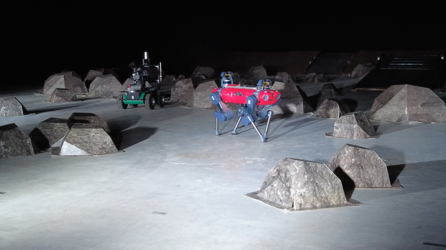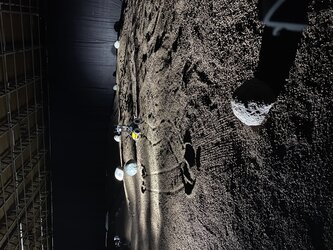Accept all cookies Accept only essential cookies See our Cookie Notice

About ESA
The European Space Agency (ESA) is Europe’s gateway to space. Its mission is to shape the development of Europe’s space capability and ensure that investment in space continues to deliver benefits to the citizens of Europe and the world.
Highlights
ESA - United space in Europe
This is ESA ESA facts Member States & Cooperating States Funding Director General Top management For Member State Delegations European vision European Space Policy ESA & EU Space Councils Responsibility & Sustainability Annual Report Calendar of meetings Corporate newsEstablishments & sites
ESA Headquarters ESA ESTEC ESA ESOC ESA ESRIN ESA EAC ESA ESAC Europe's Spaceport ESA ESEC ESA ECSAT Brussels Office Washington OfficeWorking with ESA
Business with ESA ESA Commercialisation Gateway Law at ESA Careers Cyber resilience at ESA IT at ESA Newsroom Partnerships Merchandising Licence Education Open Space Innovation Platform Integrity and Reporting Administrative Tribunal Health and SafetyMore about ESA
History ESA Historical Archives Exhibitions Publications Art & Culture ESA Merchandise Kids Diversity ESA Brand CentreLatest
Space in Member States
Find out more about space activities in our 23 Member States, and understand how ESA works together with their national agencies, institutions and organisations.
Science & Exploration
Exploring our Solar System and unlocking the secrets of the Universe
Go to topicAstronauts
Missions
Juice Euclid Webb Solar Orbiter BepiColombo Gaia ExoMars Cheops Exoplanet missions More missionsActivities
International Space Station Orion service module Gateway Concordia Caves & Pangaea BenefitsLatest
Space Safety
Protecting life and infrastructure on Earth and in orbit
Go to topicAsteroids
Asteroids and Planetary Defence Asteroid danger explained Flyeye telescope: asteroid detection Hera mission: asteroid deflection Near-Earth Object Coordination CentreSpace junk
About space debris Space debris by the numbers Space Environment Report In space refuelling, refurbishing and removingSafety from space
Clean Space ecodesign Zero Debris Technologies Space for Earth Supporting Sustainable DevelopmentLatest
Applications
Using space to benefit citizens and meet future challenges on Earth
Go to topicObserving the Earth
Observing the Earth Future EO Copernicus Meteorology Space for our climate Satellite missionsCommercialisation
ESA Commercialisation Gateway Open Space Innovation Platform Business Incubation ESA Space SolutionsLatest
Enabling & Support
Making space accessible and developing the technologies for the future
Go to topicBuilding missions
Space Engineering and Technology Test centre Laboratories Concurrent Design Facility Preparing for the future Shaping the Future Discovery and Preparation Advanced Concepts TeamSpace transportation
Space Transportation Ariane Vega Space Rider Future space transportation Boost! Europe's Spaceport Launches from Europe's Spaceport from 2012Latest

Gloomy moonscape for rover test
Thank you for liking
You have already liked this page, you can only like it once!
A Sun barely peeking over a cratered horizon, casting long shadows across a rocky moonscape: ESA’s Erasmus Innovation Centre was transformed into an analogue of the Moon’s polar regions, in a dress rehearsal for an international rover competition.
The Space Resources Challenge – supported by ESA and the European Space Resources Innovation Centre (ESRIC) in Luxembourg- is asking European (and Canadian) researchers and institutions to develop and demonstrate a system of one or more vehicles capable of prospecting resources on the Moon in the near future.
Some 13 teams have been selected to participate in the Challenge’s first field test in November, with €375 000 in ESA contracts to be awarded to the five winners, with a larger prize pool on offer after a follow-on field test next year.
“The focus here is really on prospecting – pinpointing promising resources within a difficult lunar environment then characterising them in as much detail as possible, such as through spectral analysis,” comments Massimo Sabbatini, managing the Erasmus Centre, part of ESA’s ESTEC technical centre in the Netherlands.
“We’re preparing for the first rover field test in November, which will take place in a larger location, still to be disclosed, but we decided to try out the challenge for ourselves first, here at Erasmus. We made use of an existing rover supplied by ESA’s Planetary Robotics Laboratory to try out the tasks we have planned for the Challenge, to make sure they are not too hard, or too easy. We also need to fine-tune the level of latency to be simulated – the signal delay to and from the Moon.”
The lunar poles are a focus of interest for future exploration. They do not experience the crippling temperature extremes of the Moon’s two-week days and nights, and frozen water and other deposits are believed to be buried within permanently shadowed polar craters.
For the Space Resources Challenge, teams must contend with challenging illumination conditions and potential loss of signal events to locate resources in context, including mapping a small impact crater in the vicinity of the rover’s lander – all within a two and a half hour time limit.
The remote-controlled rovers must make their way through an initial ‘traverse zone’ into the ‘region of interest’ where the resources have to be found and analysed.
The Space Resources Challenge began as a call on ESA’s Open Space Innovation Platform, seeking out new ideas and novel players in space research.
November’s field test will be followed by an ESIRIC-hosted event in Luxembourg next year.
ESA Open Day
Come join our virtual ESA Open Day on Sunday 3 October from 1300 CEST (1200 BST). It's your chance to touch base with space, talking with space engineers and experts and getting close-up views of space hardware in a suite of virtual rooms. There is also an in-person visit of ESTEC taking place the day before, open to people with disabilities. To join you have to register, more information here.
-
CREDIT
ESA-G. Porter -
LICENCE
ESA Standard Licence

Rovers compete in lunar Space Resources Challenge

Moonscape photographed by Gregor Sailer

Wheeled and walking rovers

Lunar robot wars















 Germany
Germany
 Austria
Austria
 Belgium
Belgium
 Denmark
Denmark
 Spain
Spain
 Estonia
Estonia
 Finland
Finland
 France
France
 Greece
Greece
 Hungary
Hungary
 Ireland
Ireland
 Italy
Italy
 Luxembourg
Luxembourg
 Norway
Norway
 The Netherlands
The Netherlands
 Poland
Poland
 Portugal
Portugal
 Czechia
Czechia
 Romania
Romania
 United Kingdom
United Kingdom
 Slovenia
Slovenia
 Sweden
Sweden
 Switzerland
Switzerland























